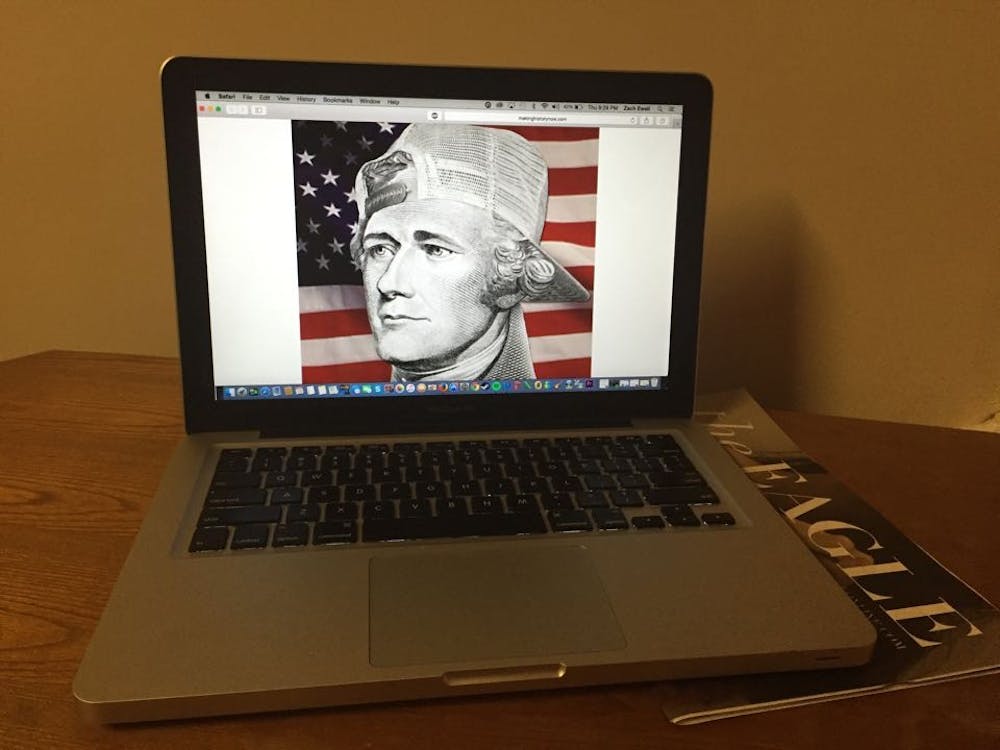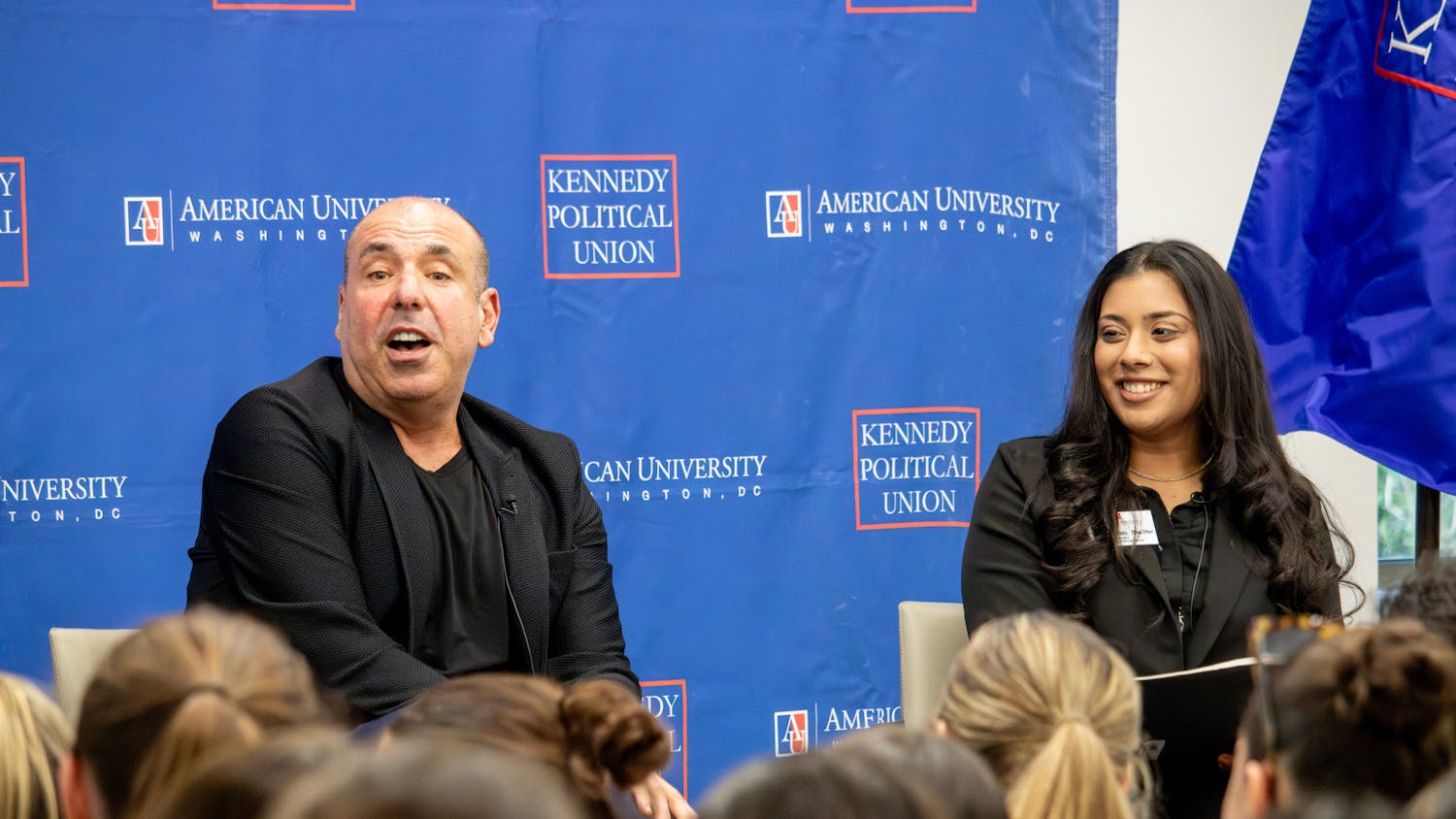As several members of the original cast of Tony Award-winning Broadway musical “Hamilton” move on to new projects, we reflect on what brought this musical its enduring legacy. At first glance, its concept - a musical based off a hip-hop mixtape - seems to be an attempt to pander to millennials in order to reinvigorate interest in the stage. Perhaps even worse, is that the mixtape was in turn based off a biography on Founding Father Alexander Hamilton. Was “Hamilton” created as a way for history professors to reach a disengaged generation?
Written and composed by Lin-Manuel Miranda, who also starred in the original cast as the titular character, “Hamilton’s” modern sound and lyrics contextualize historical moments, such as the Revolutionary War and the Constitutional Convention, for those who are not history buffs. Its massive success both critically and at the box office suggests that even skeptics and Broadway traditionalists have been won over by this modern take.
The opening number “Alexander Hamilton,” named after the titular figure, mixes contemporary music with the traditional Broadway sounding instrumentals. Its lyrics summarize Hamilton’s life, beginning with his humble roots to the peak of his leadership as the first Secretary of the Treasury. As a full company number, it lays an exposition for the rest of the musical, introducing historical figures and main players such as Aaron Burr, James Madison, Marquis de Lafayette, Thomas Jefferson, George Washington and sisters Angelica and Eliza Schuyler.
As a hook, the opening number is a make-it-or-break-it. Listeners who enjoy its sound will likely enjoy the rest of the musical. However, for those who are not a fan, it is unlikely that the rest of the soundtrack will appeal. While granted there are songs that are less hip-hop-esque, for the most part, most of them are not.
As with all Broadway soundtrack recordings, much of the musical’s actual effect is not present. No company members come before the casual listener with elaborate choreography or memorable costumes. In this way, it can be difficult to distinguish the voices singing. Although characters frequently introduce themselves in the songs, or are introduced by other characters, it is easy to become confused by who is singing and also what they are saying.
This being said, perhaps the most accessible song is “My Shot.” Conveniently placed near the beginning of the musical, it is a second attempt to wow listeners and keep them from turning off the album. Rapping, Hamilton declares himself as “young, scrappy, and hungry” and promises, “I am not throwin’ away my shot.”
While an extremely clever premise, those with short attention spans may not even make it to the second act. Similar to “RENT,” “Hamilton’s” dialogue is planted within song, essentially giving the listener the entire musical within the soundtrack. Furthermore, recently, the omission of conversations and musical numbers regarding slaves and slavery has been brought to the forefront of “Hamilton’s” criticisms. Although the cast is diverse, a purposeful decision, the lack of commentary surrounding such a dark and relevant spot on America’s history serves ironic. However, regardless of the critiques, it is inarguable that the vocal talents of Lin-Manuel Miranda and his co-stars, especially Renée Elise Goldsberry and Phillipa Soo, have propelled the show’s momentum.
There is a certain enthusiasm to Goldsberry’s voice. As Angelica Schuyler, she stands out in “The Schuyler Sisters” and “Satisfied,” both in the first act. Unluckily in love with Hamilton, who weds her sister Eliza (Soo), Goldsberry conveys a strength and vulnerability as she looks for “a mind a work” but must give it up in order to ensure her sister’s happiness.
By the second act, the musical has thickened. Synonymous with the trajectory of Hamilton’s life, marred by an extramarital affair and death, the music takes less of an upbeat, optimistic tone. Musically, there is more of a grating and dark tone to the vocals. In “Say No to This” and “We Know,” both concerning Hamilton’s affair with Maria Reynolds, the listener is introduced to a new side of the intelligent, well versed man from the first act. As Hamilton gives into temptation, stating that “I don’t say no to this,” there is a smoky slickness to the vocals.
As an album, “Hamilton: An American Musical” is consistent in its sound. While some of the songs are more upbeat, others evoke seediness. Despite this, they all create a cohesive album. Nevertheless, there is no denying that this is a musical: similar musical motifs appear and reappear throughout the first and second acts and the album’s production basks in that of a traditional musical.
Being less overt as a Broadway production, the music provides some leeway for those who are traditionally turned off by the idea of listening to a musical soundtrack. Additionally, some Broadway purists will be delightfully surprised while others will stand validated in their belief that the Rogers and Hammerstein era must return. In complete honesty, “Hamilton” is not for everyone.This being said, by appealing to those outside of the traditional Broadway mold, “Hamilton” creates something new, unique and wholly original.
Tracks You’ll Put on Repeat:
“My Shot,” “The Schuyler Sisters,” “You’ll Be Back,” “Wait For It” “Satisfied,” “Cabinet Battle #2,” “Who Lives, Who Dies, Who Tells Your Story”
Naomi Zeigler is a senior in the College of Arts and Sciences and the Opinion editor for The Eagle.
nzeigler@theeagleonline.com





